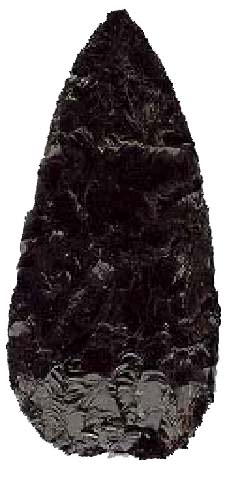Tepexpan man facts for kids
The Tepexpan Man is the name of a skeleton, which was found on the shore of the former Lake Texcoco in central Mexico. Archaeologist Helmut de Terra discovered it in February 1947. The skeleton was dated to a time before Columbus discovered America, the Pre-Columbian era. The skeleton is that of a woman. It was found near mammoth remains; it is at least 10,000 years old. It was fancifully hailed by Time magazine as the oldest Mexican soldier. The skeleton was found lying face down with the arms under the chest and the legs drawn up to the stomach. The body most likely sunk into the mud surrounding it, leaving the shoulder, back, and hips exposed, which might explain why those elements are missing. It is possible that the body was originally put in the lake.
Environment of Lake Texcoco
Dr. Gonzalez also reconstructed the environment of Lake Texcoco around the time of Tepexpan Man by analyzing sediments and fossils from the area. With her team, she analyzed sand, clay, and volcanic ash, as well as fossils of diatoms (microscopic algae) and ostracods. Ostracods are small crustaceans. When Tepexpan Man was alive, the lake was very deep, full of fish, and surrounded by trees. The environment surrounding Lake Texcoco changed a lot over the past 20,000 years: There were several volcanic eruptions. Water levels, and several types of vegetation also changed. These environmental changes clearly affected populations living in the area. Today, Lake Texcoco has almost dried up. It is on the northeast outskirts of Mexico City.
AMS radiocarbon dates of the sediments at Tepexpan show ages between 19,110±90 and 612±2214C years BP. New uranium-series date the skeleton to 4,700±200 years BP, which would indicate a Holocene age. The evidence suggests that there were large changes around Lake Texcoco in terms of the balance between water and land plants, C3 and C4 plants, saline, alkaline and freshwater conditions, volcanic activity, reworking of lake sediments, and input from the drainage basin throughout the late Pleistocene and late Holocene. These changes also had large effects on the prehistoric human populations living around the lake at this time.
See also
 In Spanish: Hombre de Tepexpan para niños
In Spanish: Hombre de Tepexpan para niños



